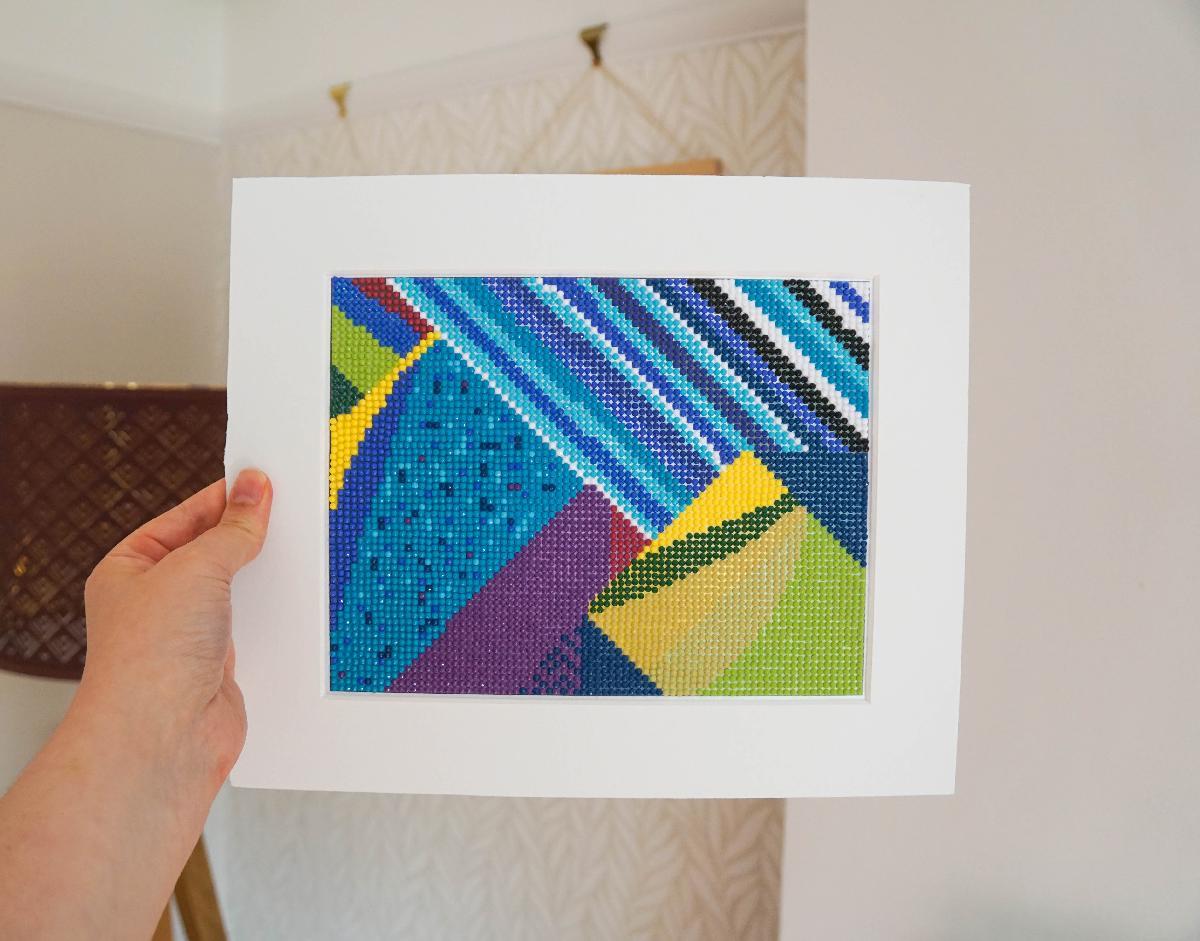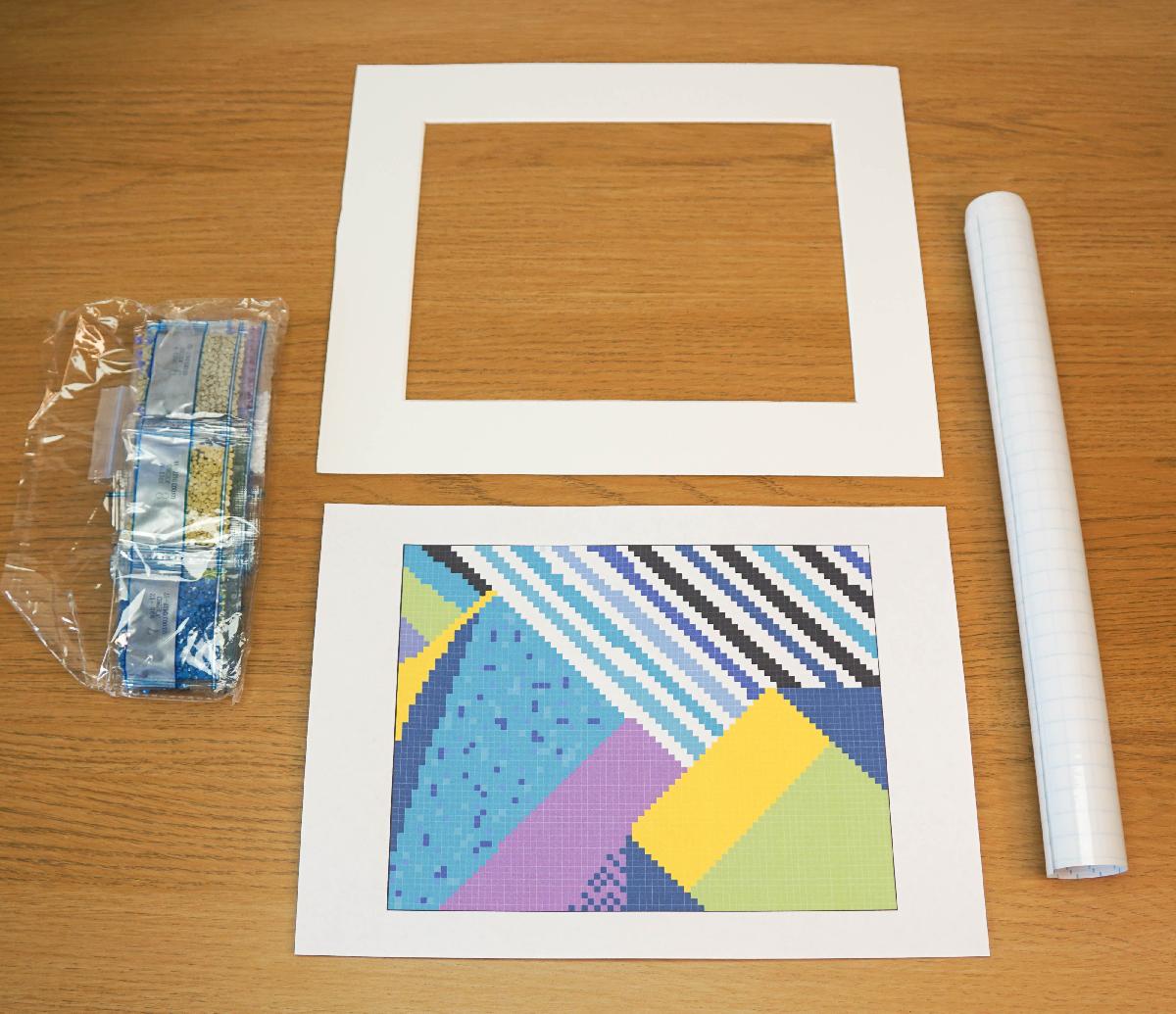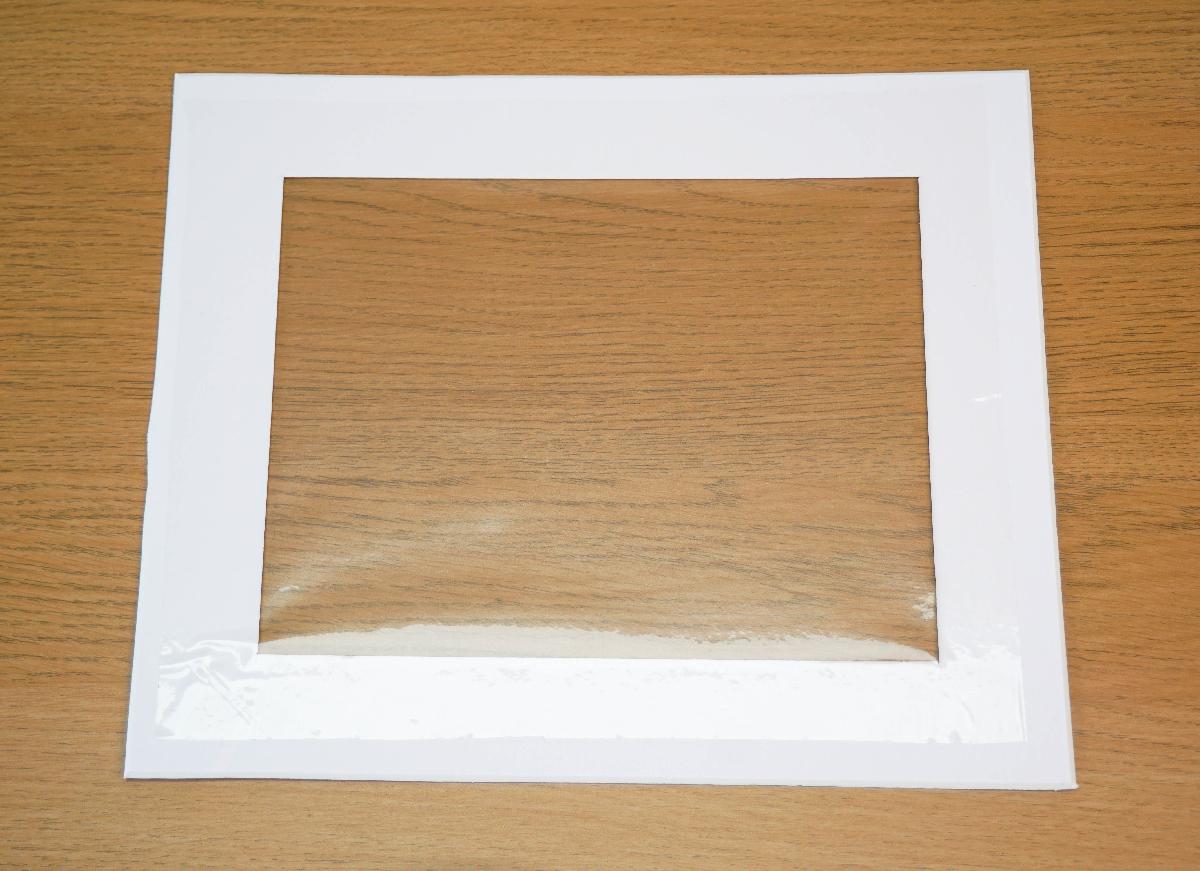DIY Diamond Painting | Make Your Own Simple Adhesive Canvas
98045 Views, 77 Favorites, 0 Comments
DIY Diamond Painting | Make Your Own Simple Adhesive Canvas







A while ago I bought a diamond painting kit and made a start...but after a little while I decided I didn't much like the image I'd chosen and set it aside. Fast forward to now and I decided I wanted to make my own art and use up as many of the little plastic gems from the kit as possible.
I wanted something modern, and so for simplicity's sake I chose to do an abstract geometric pattern. I therefore used a pattern as the basic guide and decided which gem colour I would use for each section.
If you haven't done this craft before, I highly recommend it if you want a relaxing and satisfying activity.
I hope you enjoy this Instructable!
Supplies


- Drils; these are the plastic gems that make up a diamond painting. I'm using round drils but you can use the square ones. The round ones are approx. 2.8 mm across, and so my calculations are based on this measurement. You can buy drils one-colour-at-a-time but this will end up expensive unless you're using very few. It's much cheaper to buy an inexpensive kit (try Ebay) to get a large assortment of drils. You'll want to choose a kit that uses the colours you want for your own art.
- Mat board; or you can cut out your own border out of stiff card/poster board.
- Contact paper; clear sticky-back plastic
- Diamond painting tool & tray; or you can use blu-tack on the end of a pen, plus a small tray/plate.
- Scissors
- Ruler
- Masking tape
- Computer, printer & graphic design software like Photoshop or Photoshop Elements; there is likely free software that will allow you to do this too, or you could in fact draw out your own grid and colour it in to skip using a computer altogether!
- Gloss Glaze & a paintbrush; I used 'Deco Art Triple Thick Gloss Glaze', but there are other products you can use. Just make sure it's a clear gloss finish.
- An image to use as your guide; I used an image from Unsplash. This can be any image really, but I searched through Unsplash, Pexel and Pixabay to try and find a geometric pattern. This was my 2nd placer. You can also use photographs as your inspiration, but just note that the 'drils' are not tiny enough to pick up small details within photos unless you are making a very large canvas - so it's best to use a landscape or something with larger areas of colour as the guide. Colourwork knitting patterns are also good for design ideas.
Note: I believe there are websites that will convert your image to a diamond painting canvas - which I'm guessing they charge for - and there are also free resources that do the same, but usually are aimed at cross stitch patterns instead. Cross stitch patterns and diamond painting patterns are very similar in that they are made up of square blocks. Just know that '10 count Aida cloth' means that there will be 10 cross stitch stitches per inch in the pattern. That will help you if you use those resources.
Also, there are free diamond painting and cross stitch patterns available online too and you can resize these depending on the size of dril you are using (which is very likely the same as mine). The important bit is simply that each little square block on your pattern is the same size as a dril :)
First Steps


The first thing you need to do is calculate how large you want your artwork to be, and also know how big the drils are that you'll be using.
I wanted my art to be just slightly smaller than the opening in my mat board frame, and this size was 22 x 17 cm.
The drils I'm using are 2.8 mm across.
You then need to divide the artwork size by the size of the drils, to find out how many drils will fit along the width and height of your 'canvas'.
So 22 cm divided by 0.28 (cm) is 79, and 17 cm divided by 0.28 is 61.
So my artwork will be 79 x 61 drils (so 4819 drils altogether).
Set Up the Canvas



I'm going to be showing how to do this on Photoshop (or Photoshop Elements), but I'm sure there will be similar options in other software too.
In the previous step, I worked out that I wanted my art to be 79 drils wide and 61 drils high. I therefore need to open a new custom document that is 79 pixels wide and 61 pixels high.
To work out the resolution (in pixels/cm since I'm working with cm), I divided the width in pixels by the width in cm.
This is 79 divided by 22, which equals 3.59. I rounded up to 3.6
I then coloured the entire canvas in a light colour so I could see the 'grid' that outlines the pixels.
I then made a new layer with a little sample of each colour of dril I had available in a column on the right. I just approximated the colours by eye. This gave me a palette to make my design from.
Find & Resize the Image




As I mentioned above, I found a geometric pattern on 'Unsplash' to use as my guide, but you could make your own from scratch if you prefer.
You will need to open this image in your software and resize it so that it's at least as big as the size of your artwork canvas. Also use the same resolution setting as before (in my case 3.6 pixels/cm).
Rotate the image if necessary. Then copy and paste this image into your canvas document so that it is in a layer below the palette.
Create Your Design



In a new layer above your guide image, use the pencil tool (set to 1 px in size) to draw your design.
I used the eyedropper tool to select the colour I wanted from my palette, and then just drew the shapes freehand, using the image below as my guide.
Mostly I just used solid blocks of colour, but I also put speckles of other colours in a couple of blocks for interest. Obviously you can make your design as complex as you wish!
I didn't count how many drils I had available to make sure I had enough - I figured I'd just amend the pattern as I go - but you can be a bit more exacting if you wish :)
Print the Design



To make sure that the outline around each pixel remained, I made sure that the image was at 100% on the screen and took a screenshot (Alt + PrtScr).
I copy and pasted this screenshot into a new document and printed it out, making sure it was at the correct physical size (22 x 17 cm).
Assemble the Canvas






Cut out a piece of contact paper that is at least 2 cm wider and longer than the opening of your frame. Then peel off the protective backing and stick the contact paper to the back of the mat board. Try and have the film as taut over the opening as possible so there aren't wrinkles in it.
Keep the protective backing nearby so you can cover the contact paper over again to protect it from dust as you're working on it.
Then use masking tape to attach the printed-out pattern to the back of the board also. Trim this paper down if necessary so that it is a little smaller than the frame.
This will give you a frame with sticky film within the opening, as shown in the photos.
Add the Drils






In a diamond painting kit you usually receive a tool, a piece of wax, and a tray. To use the tool, you push the end into the wax and this makes the end of the tool just sticky enough to lightly stick to a dril. I personally prefer a bit of blu-tack on mine but that's personal preference :)
All you then do is put some drils in the tray and carefully shake from side-to-side to try and get a fair number of them with the flat side facing down, then tap the end of the tool onto the curved top of a dril and transfer it onto the contact paper canvas.
Notes: Try and keep your fingers, dust, hair and anything else off the contact paper to maintain the stickiness. It's best practice to cover the area you are not working on with plastic sheet that can peel off again easily. Also, try and get the drils in the centre of each square pixel to make it easier to place all of the drils in the space. You can use tweezers to move the drils if you need to.
Block by Block








You'll see here that I ran out of yellow and green before completing a block, so I tried to finish with neat lines and then chose other colours to fill in the gap. Also, on the stripes I ran out of black and white so filled in with various shades of blue.
Design Complete!




As you can see, the colours are a bit different in some places but the overall pattern is almost the same. It was a fun process and I'm very pleased with the result - I think it looks bright and modern, just what I wanted!
Adding the Gloss Glaze




For the last step, I brushed on a fairly thick layer of Triple thick gloss glaze and left it to dry. Try to be gentle doing this so that you don't knock any drils out of place.
This is a good idea to do because it really helps the drils stick more securely and form into a single connected layer...and using a gloss finish ensures that the drils remain nice and shiny :D
And that's it! I hope you enjoyed this tutorial.